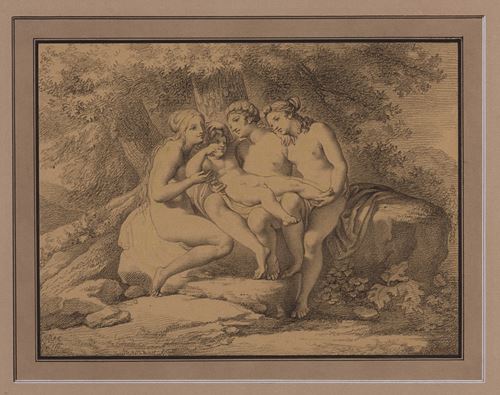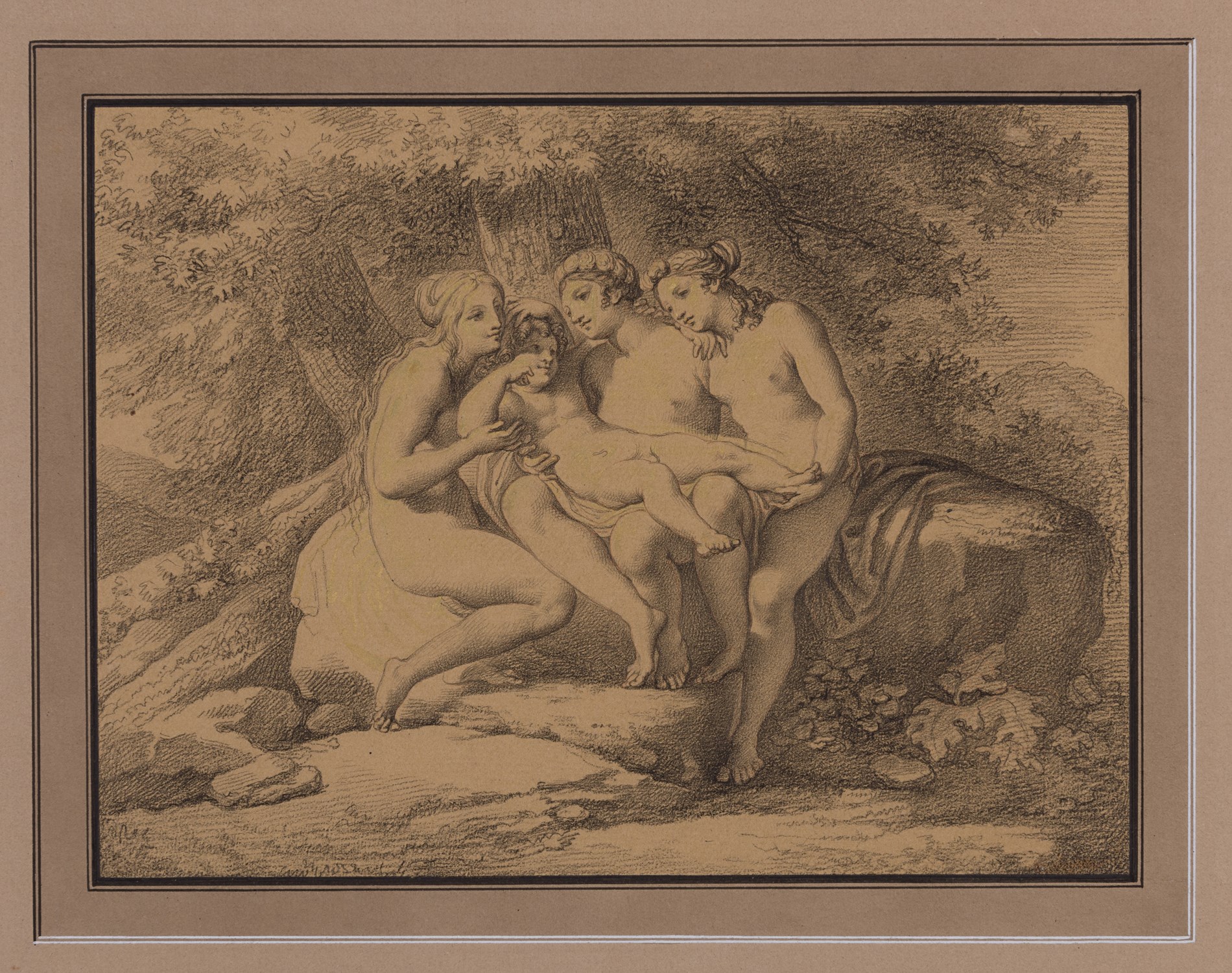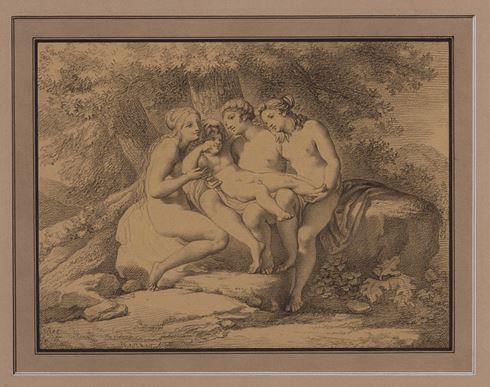
Pelagio PALAGI
Bologna 1775 - Turin 1860
Biography
At the age of twelve Filippo Pelagio Palagi was taken into the home of the important Bolognese collector Count Carlo Aldovrandi, where he was able to study the extensive collection of prints in the count’s library, and also attended life drawing classes at the Accademia Clementina. By 1795 Palagi was collaborating with Antonio Basoli on the pictorial decoration of the house of the Trebbi family in Bologna. He was to work alongside Basoli, as well as Felice Giani, on other decorative projects for private homes in Bologna between 1801 and 1805, and at the same time received sculptural commissions for a number of sepulchral tomb monuments in the Certosa of Bologna. Elected to the Accademia Nazionale di Belle Arti in Bologna in 1803, Palagi undertook a study trip to Rome, financed by his patron Aldovrandi, three years later. He remained in Rome until 1815, studying at the Accademia di San Luca and meeting such artists as Vincenzo Camuccini (who was to have a profound influence on his style), Francesco Hayez, Tommaso Minardi and Jean-Auguste-Dominique Ingres. During his time in Rome Palagi worked on the renovation and decoration of the Palazzo Venezia in 1811 and the Palazzo del Quirinale in 1812, and also painted a fresco in a room in the Palazzo Torlonia. It was also while he was in Rome that he began to assemble what would eventually become a superb collection of Greek, Egyptian, Etruscan and Roman sculpture, objects and coins.
Between 1815 and 1832 Palagi lived and worked in Milan, where he founded a private art school and established a particular reputation as a portrait and history painter, working predominantly in a Neoclassical style. In 1832 he was summoned to the court of the Savoy dynasty in Turin by Carlo Alberto, King of Sardinia, for whom he was to work for the remainder of his career. Within a few years Palagi had been appointed court painter for all of the royal residences, working at the castle and park of Racconigi, the Castello di Pollenzo and, most significantly, at the Palazzo Reale in Turin, where between 1839 and 1858 he painted a magnificent ceiling painting of The Dance of the Hours for the ballroom. He also worked at the Teatro Regio in Turin and the Villa Traversi at Desio. It was during this period that Palagi reached the height of his success and fame, leading Stendhal to famously describe him as ‘le célèbre Palagi, peintre de Bologne’. His achievements as an architect, interior decorator, painter, sculptor, scenographer and furniture designer were considerable, and had a profound influence on later generations of artists and decorators. At Palagi’s death he left his extensive collection of antiquities, library and archive to his native city of Bologna, and as such the largest collection of his drawings and designs, numbering over three thousand sheets, is today in the Biblioteca Comunale dell’Archginassio there.


